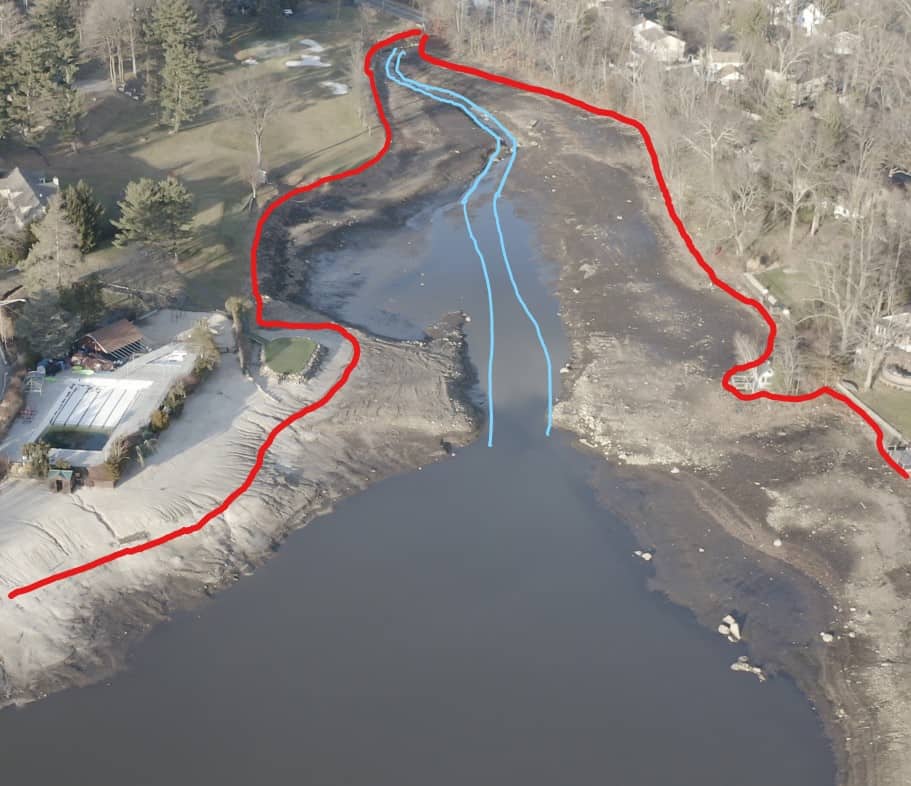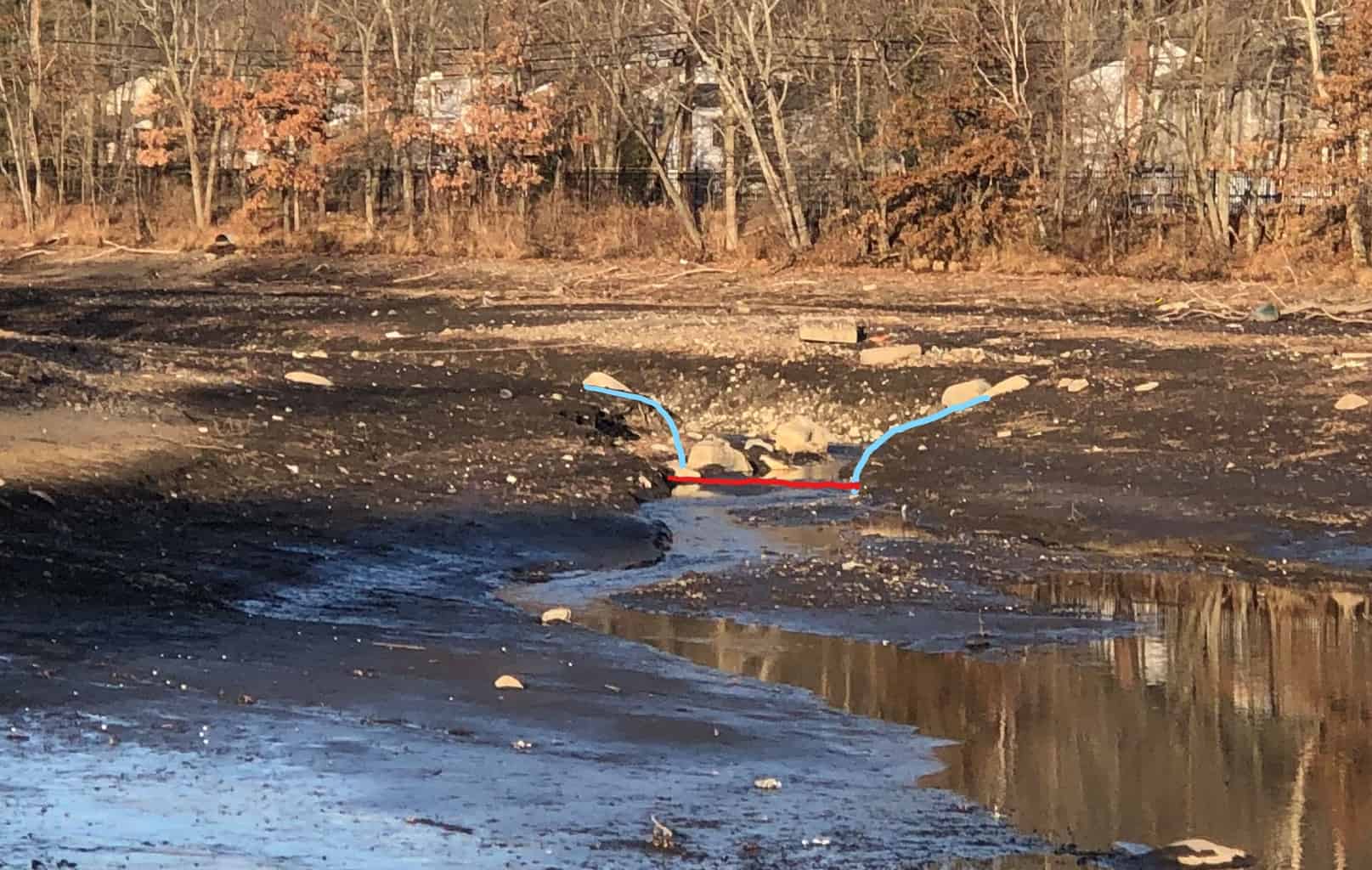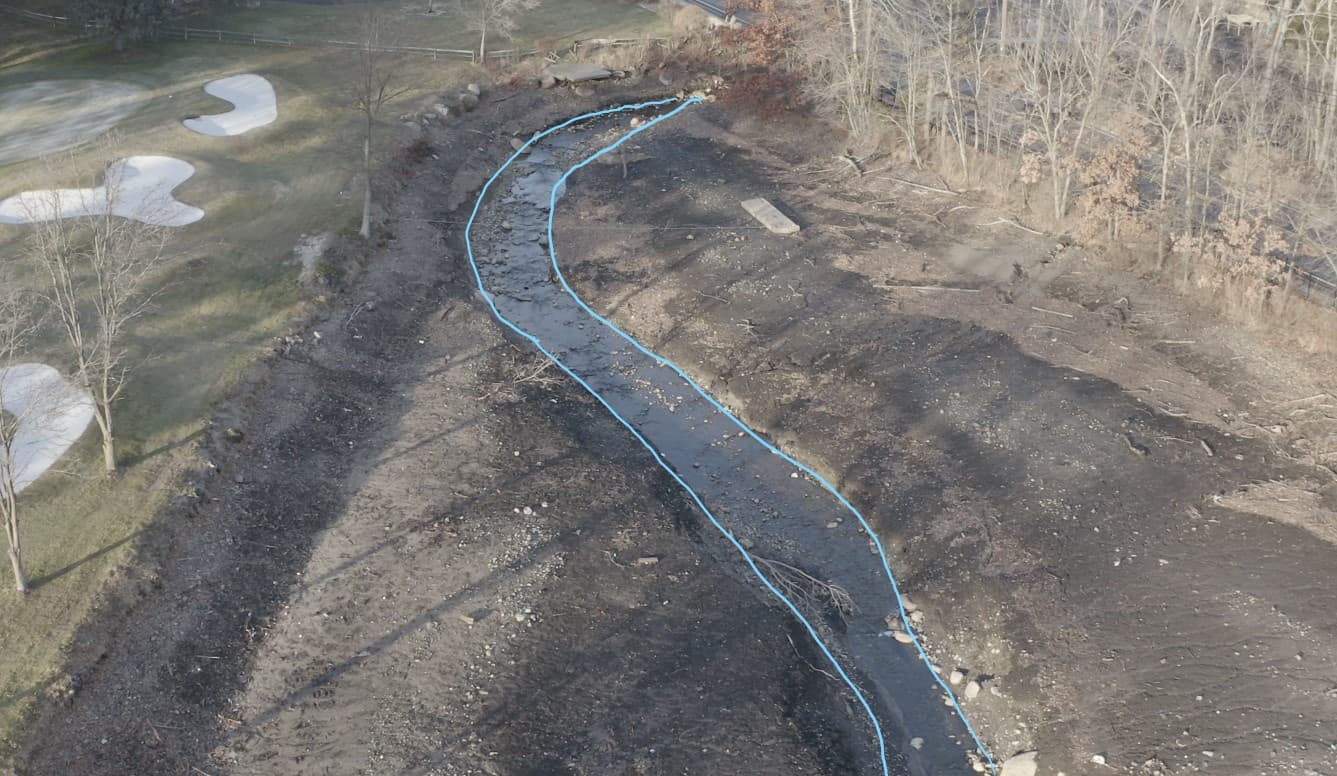If you’ve spent any length of time searching for victims or evidence on the bottom of a dark body of water, then you may have experienced one of the “unknowns” that can really mess with a diver’s head: the creek bed.
This post was mostly inspired by the discovery of a local lake that had been recently drained for some dam repair work. After the water trickled away, a nice underwater creek bed was revealed.
So of course that meant it was time to get the drone out and go document some dirty water and thick mud.
What is the “Creek Bed” Anyway?
Without getting too poetic about it, the “creek bed” is a colloquial term used to describe the channel formed by the original body of water (usually a river) that was ultimately turned into a larger body of water.
This can happen from man-made interventions (such as dams) or natural events (like water flooding a basin during a severe storm and remaining).
Put another way… it’s the riverbed under some lakes. The river was there first; the lake came later. Depending on the region you are in, it may also be referred to as a “stream bed”.
For context, the lake I’m using as an example appears as a small stream on historical topographical maps dated 1912, before morphing into a lake in 1933. The cause for this change is likely the result of the dam constructed on the downstream end of the property.
Regardless of how this lake was constructed, it has been a lake for almost 100 years.
And yet… the creek bed remains.
So why do we care about some creek bed in a lake? And why did I get so excited about finding this?
Well, the creek bed can present several challenges and hazards for divers. And any opportunity to address some tiny nuance of this craft is an opportunity worth exploring.
The Creek Bed and Public Safety Divers
The first challenge for divers when they “find” the creek bed is the challenge that happens in their own head.
The experience can be rather eerie…
At first, it seems like a “typical dive”. You are groping your way along a gently sloping bottom in awful visibility, and all seems… normal.
Then… you fall off an underwater cliff.
Or you almost fall off a cliff, but catch yourself in time. (Listen, I’m being facetious here, but when you’re down there… It really feels like a cliff).
Because of the likely poor visibility and the sudden change in depth going into the creek bed, it usually feels like that creek bed is the opening to the depths of the earth. There doesn’t seem to be a bottom, and it’s extra dark.
You can stick a leg in there, hoping for the bottom, and it just feels… never-ending.
How you cope with that unknown darkness is between you and yourself.
Logically, we know the creek bed isn’t 5000’ deep, and it won’t swallow us whole. In most cases, it is just a few more feet until the diver reaches the bottom of the creek bed.
But those few more feet can be unnerving.
And let’s not forget the actual dangers…
What Hazards Lurk in the Creek Bed?
Think of your favorite stream or narrow river. How do the banks look? Are they smooth mud? Or are they littered with large rocks that are undercut by the flowing water?
Probably more like the second one.
Often, these underwater creek beds look much like they did when they weren’t at the bottom of a lake. The banks are steep and unpredictable, and large rocks can be perched precariously on the bank.
These rocks, and the debris caught in them, can form an easy entanglement hazard for unwary divers who are not expecting such a sudden change in bottom topography, or know what it can mean.
Remember, these creek beds were once home to flowing water with a single direction. And all the strainers, obstructions, and nastiness we normally expect in a surface river can also occur in these underwater rivers.
Only, you may not see it coming.
The River Wanders…
The creek beds can also be navigationally confusing, since many rivers meander with the landscape in seemingly random directions.
A diver in the creek bed may inadvertently follow the contour of the bed, thinking it runs in a straight path. In reality, the diver can end up wandering in a random pattern following a river that turns unexpectedly.
In blackwater, that’s an easy trap to fall into.
Can we find our target in the creek bed…?
So the big question: Will a body inevitably end up in the creek bed?
Maybe.
Realistically, there are a staggering number of factors that affect the drift of a drowning victim as they descend to the bottom. Current, clothing, obstructions, body composition, depth, etc. can all combine to spread out the cone of descent.
Now, if a body lands on a gentle slope (like the existing lake bottom) then there is much less of a chance that it will continue down to the creek bed. Despite the idea that gravity will continue to pull the body down to the absolute depth, that just doesn’t happen in reality.
That said, if the body lands on the slope of the creek bed, then the slope may be steep enough to bring the body further down to a place where the slope flattens out. That spot may just be at the bottom of the creek bed.
Don’t let the creek bed spook you.
At the end of the day, the creek bed is nothing more than a notable change in the bottom contour of your dive location. What the diver does with that contour is typically more important than the actual presence of the change.
The important takeaway is for divers to know that these things exist. And when they inevitably come across it, what that may look or feel like.
Even better… Divers should know what possible additional hazards may lurk in that creek bed. Hazards that they may not see, or can even perceive.
We may not know the creek bed is even there…
Doesn’t mean we won’t find it eventually.



